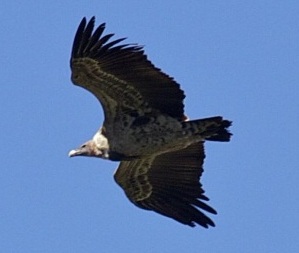| Reference | Sequence |
|---|---|
| Eze. 1:10 As for the likeness of their faces, they four had the face of a man, and the face of a lion, on the right side: and they four had the face of an ox on the left side; they four also had the face of an eagle. | Man Lion Ox Eagle |
| Eze. 10:14 And every one had four faces: the first face was the face of a cherub, and the second face was the face of a man, and the third the face of a lion, and the fourth the face of an eagle. | Cherub Man Lion Eagle |
| Rev. 4:7 And the first beast was like a lion, and the second beast like a calf, and the third beast had a face as a man, and the fourth beast was like a flying eagle. | Lion Calf Man Eagle |
Man was made in the image of God and "God is love." Gen. 1:26-27; 1 John 4:8, 16
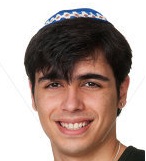
Shown both by our Lord as the "Lion of the tribe of Judah" (Gen. 49:9-10;) and by the adversary who is described as "a roaring lion" in 1 Pet. 5:8. See also Num. 23:24; 2 Sam. 17:10; and especially Pro. 30:30
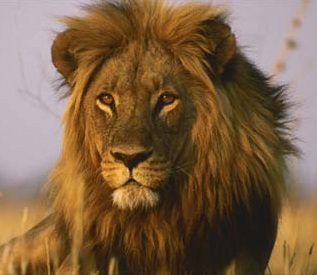
H7794A bullock, when we remember the Day of Atonement sacrifices, what an appropriate symbol for Justice.
שׁור
shôr
shore
From H7788; a bullock (as a traveller). wall used by mistake for H7791: - bull (-ock), cow, ox, wall [by mistake for H7791].
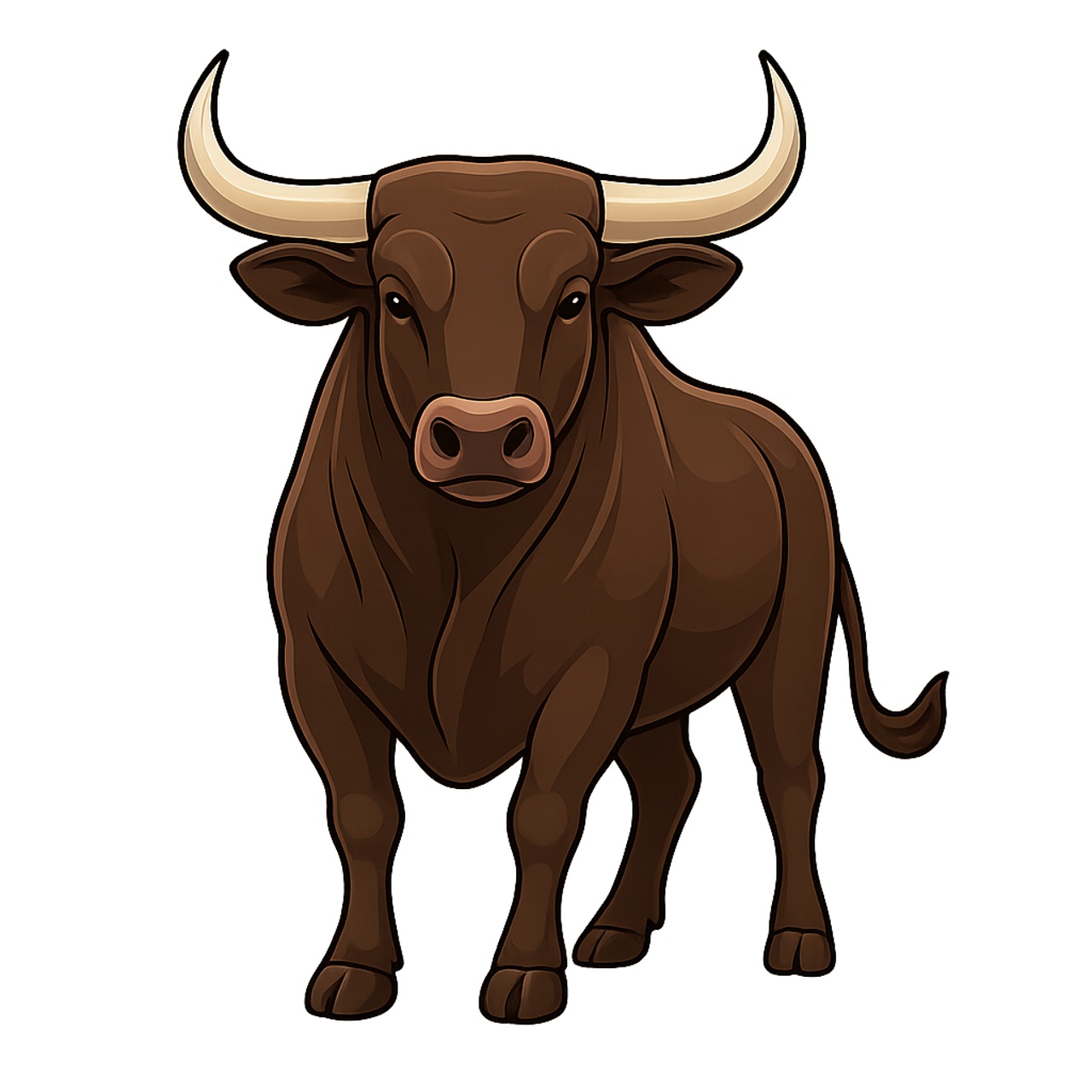 |
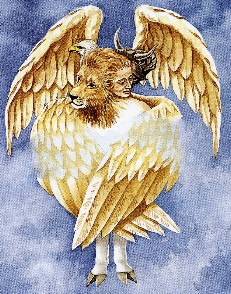 |
| Eze. 1:10; Rev. 4:7 Bullock | Eze. 10:14 Cherub |
See also Eze. 10:14; Rev. 4:7.
Note: "Ruppell's Griffon" is a type of Vulture (eagle.)The following information is from phoenixzoo.org "Ruppell's Griffon is the highest flying bird on record, once spotted at an altitude of over 37, 000 feet in the skies of West Africa. From a standing start the Ruppell's vulture can fly over three miles in six minutes. They can cruise at over 22 mph, and will fly as far as 90 miles from a nest site to find food. When thermal currents start to develop enough lift, about two hours after sunrise, Ruppell's vultures leave the roost and begin to patrol over the plains, using their exceptionally keen eyesight to find large animal carcasses, or carnivores which have made a kill. The Ruppell's vulture often stays in the air for six to seven hours a day."
We are all familiar with the beautiful symbolism of the Tabernacle and how the lid of the Ark of the Covenant shows us God's four attributes.
The base, or mercy-seat, of the ark pictures Justice. The two cherubim atop the lid picture Love and Power while the Shekinah light pictures God's all pervasive Wisdom.
In that picture Love and Power (two cherubim looking down at the mercy-seat) are waiting for Justice to be satisfied. That is why the blood of the Bullock was sprinkled on the mercy-seat, i.e., to satisfy Justice.
When we go to the Temple (picturing God's Kingdom arrangement) we see two large cherubim standing with their wings spread wide as if in full flight. This pictures the time when Justice has been satisfied and now Love and Power (the two cherubim) are free to act.
With this in mind let us take a quick look at Ezekiel's Temple.
Eze 41:18-19 And it was made with cherubims and palm trees, so that a palm tree was between a cherub and a cherub; and every cherub had two faces; [19] So that the face of a man was toward the palm tree on the one side, and the face of a young lion toward the palm tree on the other side: it was made through all the house round about.
Since the two cherubim have the face of a Man and the face of a Lion, and the two cherubim on the Ark of the Covenant represent the attributes of Love and Power, the logical conclusion is that Man represents Love and Lion represents Power.
There are three things that immediately stand out in comparing the three references where the Lord uses these symbols.
1. The sequence in which they are mentioned is different each time.
2. Even though the sequence differs each time, the eagle is always mentioned last.
3. The symbol for Justice (Calf, Bullock (ox), Cherub) is different in each usage.
1. The sequence in which they are mentioned is different each time.
Eze. 1:10 Eze. 10:14 Rev. 4:7 Man – Love Cherub – Justice Lion – Power Lion – Power Man – Love Calf – Justice Bullock (Ox) – Justice Lion – Power Man – Love Eagle – Wisdom Eagle – Wisdom Eagle – Wisdom
The face that appears first is indicating the Attribute that is most directly involved in that setting.
For example: In Eze. 1:10 we see the Glory of God (the Truth of His Divine Plan of the Ages) being described in highly symbolic language. This is what reveals to us the loving character of our God. Thus the first face is that of a Man (Love.) The second place (Eze. 10:14) the setting is the pouring out of the plagues upon Christendom. The face that is mentioned first is a Cherub (in other places: calf, bullock) or Justice.
2. Even though the sequence differs each time, the eagle is always mentioned last.
The eagle with its ability to see great distances is a wonderful symbol for God's Wisdon which is able to see into the far distant future and still accurately determine the events that will take place, insuring that all is under His control.
"Think for a moment of the memory that never fails; of the judgment that never errs; of the wisdom that plans for eternity without the possibility of failure, and that times that plan with unerring precision for the ages to come." R1560
God's Wisdom oversees everything He does. The other three attributes may be considered as action attributes. While, as principles they do not change, as actions they will operate differently depending on the situation. This is shown in the Ark of the Covenant in the Most Holy of the Tabernacle. Justice (the mercy-seat) was preventing Love and Power (the two cherubim) from flying into action to bless mankind. The shekinah light (Wisdom) was always there and is not effected by any situation.
In the temple we see two large cherubim covering the back wall of the Most Holy, indicating that Love and Power are no longer restrained by Justice but are now in full flight to bless mankind. – Wisdom never changes its operation.
3. The symbol for Justice (Bullock (ox), Cherub) is not the same in every reference.
There does seem to be a progression given here going from a Bullock (Eze. 1:10; Rev. 4:7) to a Cherub.
μόσχος
moschos
mos'-khos
Probably strengthened for ὄσχος oschos (a shoot); a young bullock: - calf.
Every use of this word in the New Testament is given below:
Luke 15:23; Luke 15:27; Luke 15:30; Heb. 9:12; Heb. 9:19; Rev. 4:7
The Heb. 9:12 text is most convincing: "Neither by the blood of goats and calves [G3448 a young bullock], but by his own blood he entered in once into the holy place, having obtained eternal redemption for us."
When we realize that this is speaking of the Day of Atonement sacrifices and then realize that it was the blood of a Bullock (and that of a goat) that was taken into the Most Holy then it becomes clear that the "calf" is the same as a "Bullock."
This is more difficult to understand than the previous two observations.
This then changes our understanding of what the Lord is showing us. In Eze. 1:10 and Rev. 4:7 the attribute of Justice is represented by a Bullock while in Eze. 10:14 it is represented by a Cherub. So the natural question is: "Why does it change from a Bullock in Rev. 4:7 and Eze. 1:10 to a Cherub in Eze. 10:14?"
In Rev. 4:7 and Eze. 1:10 the reference is tied more directly to the Ransom, the satisfaction of Justice, having been given. In Eze. 10:14 the context is the pouring out of the seven last plagues, the action of taking vengeance as requested by the saints in Rev. 6:10. Because this is action and it is being executed by our Glorified Lord it is shown under the more powerful symbol of a cherub.
The thought here seems to be that once the seventh plague (Armageddon) has finished its work, the scales of God's Justice against this old order of things will have been balanced. After that, the New Covenant may then go into operation.
